 advertisements advertisements
|

|
Chang'e 5 probe lands on moon to collect and return lunar samples
December 1, 2020 — China has landed a robotic spacecraft on the moon, moving a step closer to returning the first lunar samples to Earth in more than 40 years.
The Chang'e 5 lander touched down in the moon's Oceanus Procellarum ("Ocean of Storms") on Tuesday (Dec. 1), a week after launching from China. The four-legged probe, which is equipped with an ascent vehicle for the return of moon rocks and soil, was confirmed down on the lunar surface at 10:11 a.m. EST (1511 GMT or 11:11 p.m. Beijing time).
"The spacecraft landed at the preselected landing area near 51.8 degrees west longitude and 43.1 degrees north latitude," the Xinhua news agency reported the China National Space Administration (CNSA) as saying.
Named for the moon goddess from ancient Chinese mythology, the Chang'e 5 mission was targeted for a touchdown near Mons Rümker, a volcanic formation in the northwest region of the Earth-facing or near side of the moon. Lunar material collected from this region may be the youngest samples ever returned, dating back 1.21 billion years. (By comparison, the Apollo astronauts gathered material that was 3.1 to 4.4 billion years old.)
According to a mission schedule shared on Chinese social media, the Chang'e 5 lander is expected to use its coring drill to bore up to 6.5 feet (2 meters) into the moon's surface beginning as soon as two hours after the landing. If that process proceeds to plan, then it will be followed by the use of a robotic arm to scoop up the raised regolith and deposit it in a container on board the small ascent vehicle.
The sample container can hold up to 4.4 pounds (2 kg) of lunar rock and soil.
The ascender will then lift off the moon, possibly as soon as Thursday (Dec. 3).
Once in flight, the ascent stage will deploy solar panels and execute up to four phasing burns to rendezvous and dock with the Chang'e 5 service module and reentry capsule. The lander and ascent stage separated from the orbiter Sunday (Nov. 29) at 3:40 p.m. EST (2040 GMT), prior to descending to the surface.
After reuniting in lunar orbit, the ascent stage will transfer the lunar samples to the capsule and then separate from the orbiter. The service module will then adjust its orbit to depart for Earth.
On approach to the planet, the capsule will separate from the service module to perform a high-speed atmospheric skip reentry. The capsule will then parachute to a touchdown in the Siziwang Banner in Inner Mongolia on or about Dec. 15.
Chang'e 5 is the sixth mission in the Chinese Lunar Exploration Program (CLEP), which was established in 2003 to ultimately land Chinese astronauts on the moon. Prior to Chang'e 5, the CLEP missions included two orbital missions, two landers with rovers and a test mission (Chang'e 5-T1) that verified China's ability to return a spacecraft from lunar orbit.
The Chang'e 4 mission, which achieved the first-ever landing on the far side of the moon in 2019, continues to operate in the Von Kármán crater on the South Pole-Aitken basin. (The Chang'e 3 lander, which achieved China's first lunar landing in 2013, is also still active, though its companion Yutu rover has ceased functioning.)
Chang'e 5 is the 21st mission in history to safely touch down on the moon.
If successful, Chang'e 5 will also be the first probe to return lunar samples since the former Soviet Union's Luna 24 mission, which retrieved 6 ounces (170.1 grams) of moon material in August 1976. In total, there have been nine missions (prior to Chang'e 5) that have brought moon rocks and lunar soil back to Earth, including six Apollo missions launched by the United States and three Soviet Luna missions. The twelve NASA astronauts who walked on the moon collected a total of 842 pounds (382 kg) of lunar samples between 1969 and 1972.
The European Space Agency (ESA) has been supporting the Chang'e 5 mission by tracking the spacecraft, as well as by providing an on-call back-up for China's ground stations.
Once back on Earth, the Chang'e 5 lunar samples will be stored at the Chinese Academy of Sciences' National Astronomical Observatory of China in Beijing, with a small cache to be held elsewhere as a precaution against natural disasters. China plans to put some of the samples on public display, but it is not yet clear how they will be distributed. |
|
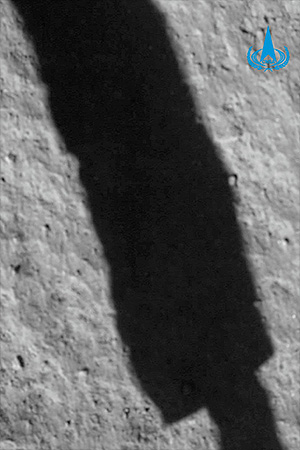
Image transmitted by China's Chang'e 5 lander after touching down on the moon on Tuesday, Dec. 1, 2020. The shadow is being cast by part of the robotic spacecraft. (CNSA/CLEP)
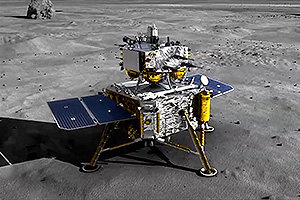
Rendering of China's Chang'e 5 lander after touching down on the moon. The spacecraft is equipped with a coring drill, a robotic arm and an ascent vehicle to collect and return lunar samples. (CCTV)
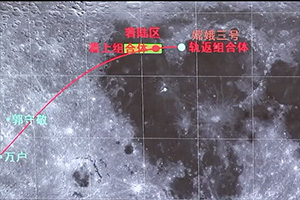
Map showing where China's Chang'e 5 lander touched down on the moon in Oceanus Procellarum ("Ocean of Storms"). (Xinhua) |
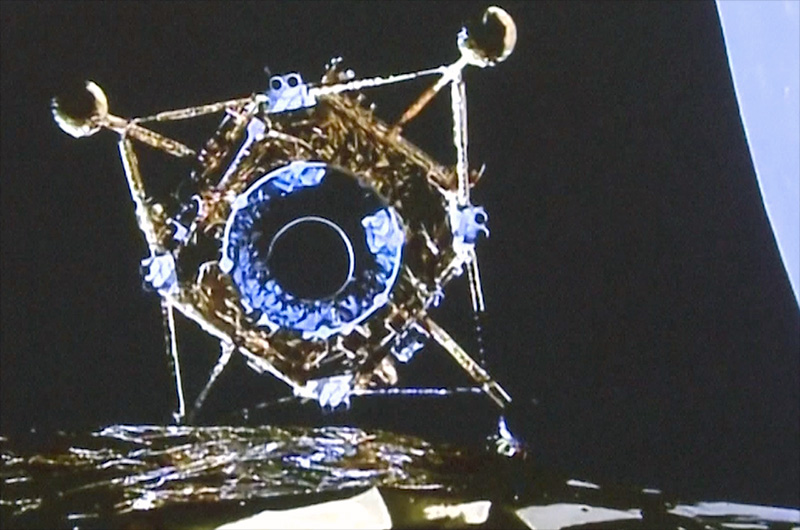
China's Chang'e 5 lander and ascent vehicle separates from its orbiter and reentry capsule on Monday, Nov. 30, 2020 Beijing Time ahead of a landing in the moon to collect and return lunar samples. (CCTV) |
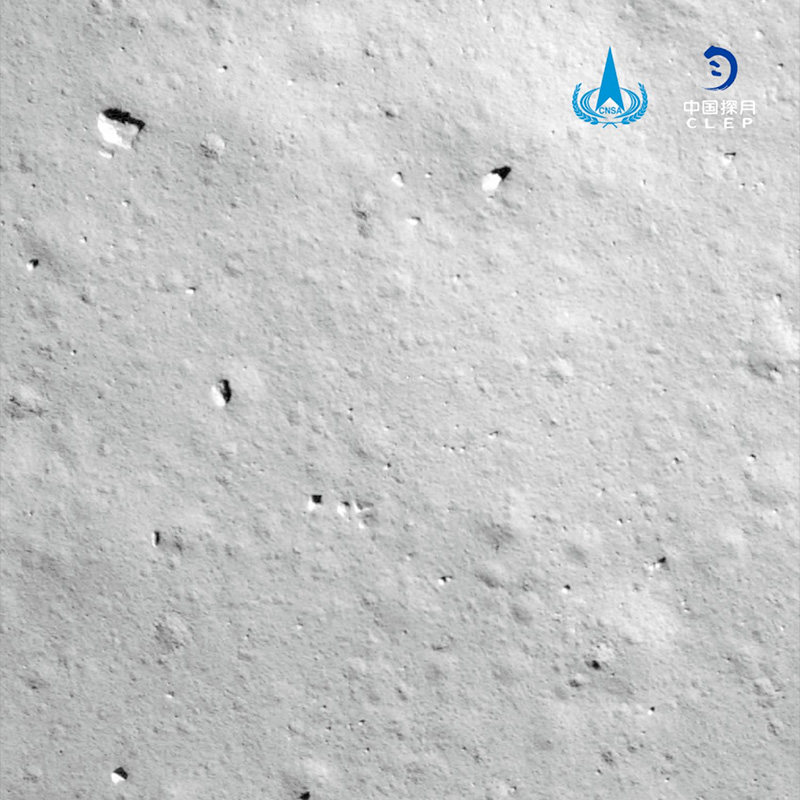
Image transmitted from China's Chang'e 5 lander as it approached a touch down on the moon on Tuesday, Dec. 1, 2020. The lunar sample return mission was targeting a landing in Oceanus Procellarum ("Ocean of Storms"), near the volcanic formation Mons Rümker. (CNSA/CLEP) |
|

© collectSPACE. All rights reserved.
|
|

|

|
